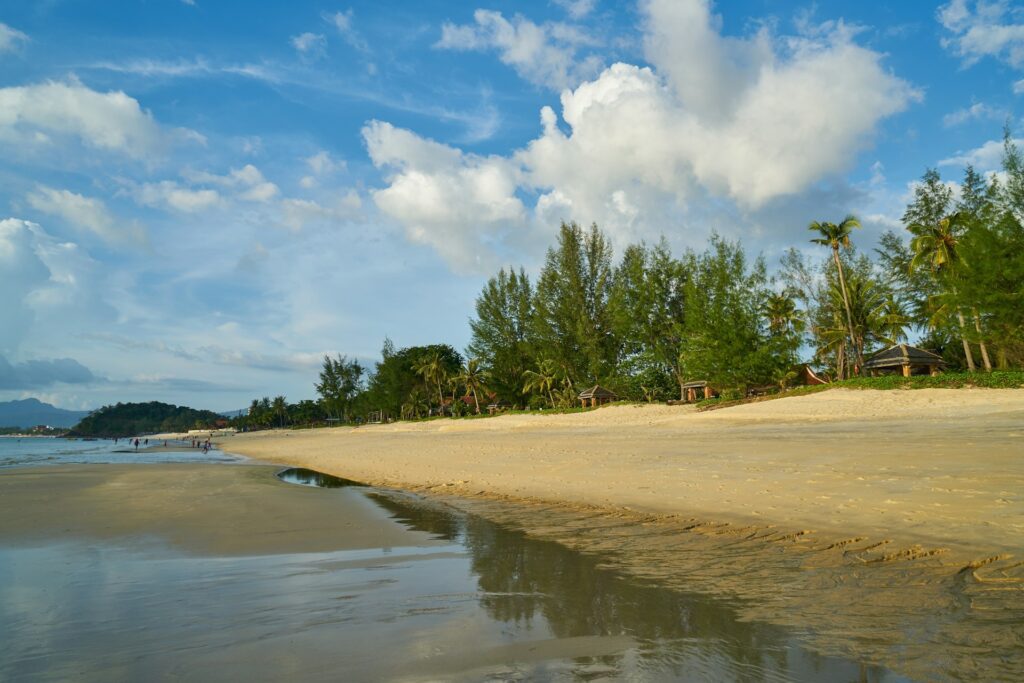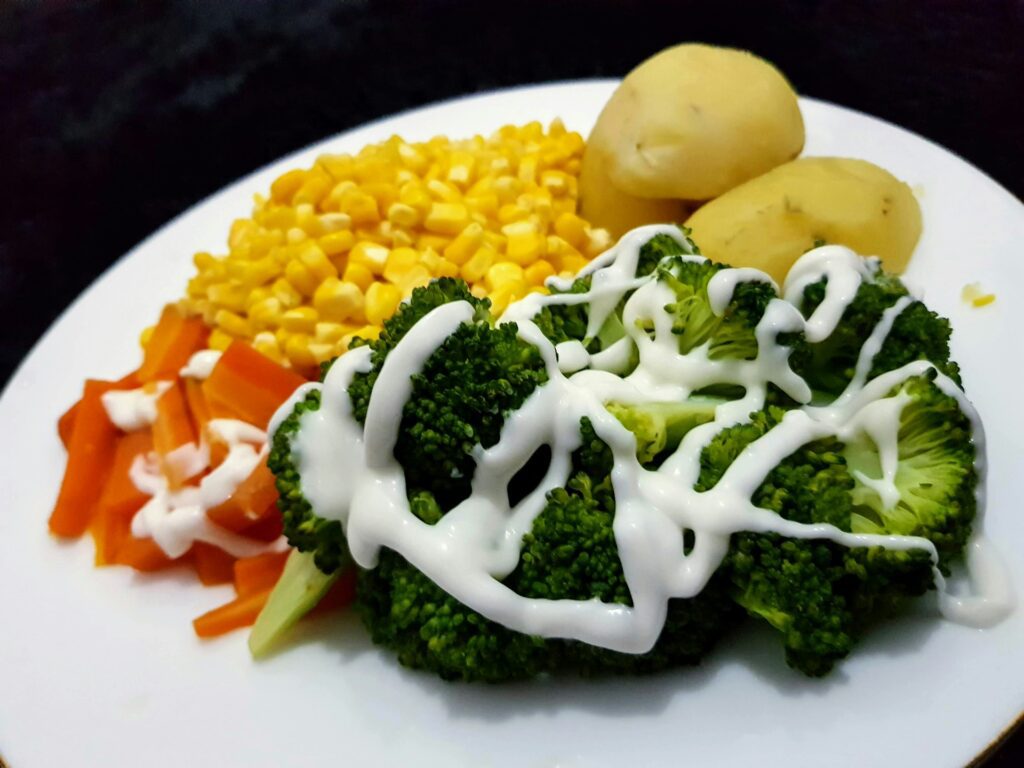Before Your Trip to Thailand
The Weather in Thailand
Thailand has a tropical climate with three main seasons: hot, rainy, and cool. The hot season, from March to May, sees temperatures between 26°C to 35°C (79°F to 95°F), particularly in Bangkok and Chiang Mai. The rainy season, from June to October, brings warm temperatures (25°C to 32°C or 77°F to 90°F) and brief, intense showers, especially in coastal areas like Phuket and Krabi. The cool season, from November to February, is ideal for travel, with pleasant temperatures (22°C to 32°C or 72°F to 90°F) in Bangkok and cooler weather in the north, such as Chiang Rai, where it can drop to 13°C (55°F). The dry and pleasant weather during this season makes it perfect for outdoor activities and exploring. Understanding these patterns helps in planning a comfortable and enjoyable trip.

How to Dress in Thailand – Seasonal Considerations
Spring
During spring, Thailand experiences warm weather with temperatures ranging from 25°C to 35°C (77°F to 95°F). Lightweight, breathable clothing is ideal. Pack comfortable walking shoes, a hat, and sunglasses to protect against the strong sun. Modest attire is required when visiting temples and religious sites, so include long sleeves and trousers or skirts.
Summer

Summer in Thailand is hot and humid, with temperatures often exceeding 35°C (95°F). Light, airy fabrics and moisture-wicking materials are essential to stay cool. Sunscreen, a hat, and sunglasses are crucial for sun protection. Consider packing a lightweight rain jacket or umbrella, as summer can also bring sudden rain showers.
Fall
Fall is a transitional season with a mix of hot and cooler days. Temperatures range from 24°C to 32°C (75°F to 90°F). Light layers work well, allowing you to adjust to changing conditions. Fall is a wonderful time to visit Thailand, as the weather is generally pleasant and the landscapes are lush from the monsoon rains.
Winter
Winter in Thailand is cooler and drier, with temperatures ranging from 20°C to 30°C (68°F to 86°F). Light clothing is still appropriate, but you might need a light jacket or sweater for cooler evenings, especially in northern regions like Chiang Mai. Winter is a popular season for travel due to the pleasant weather, so pack accordingly.
The Currency in Thailand

The official currency in Thailand is the Thai Baht (THB). It is advisable to carry some local currency for small purchases, as not all places accept credit or debit cards, especially in rural areas. ATMs are widely available throughout the country, and major credit cards are accepted in most hotels, restaurants, and larger stores. When using ATMs, be aware that there may be fees for foreign card transactions, so it’s a good idea to withdraw larger amounts to minimize charges. Additionally, keeping some smaller bills and coins on hand can be useful for things like street food, market shopping, and transportation, where exact change is often appreciated. Having local currency ensures smoother transactions and a more convenient travel experience.
Where to Exchange Money in Thailand?
Currency exchange services are readily available at airports, banks, and authorized exchange counters in Thailand. Airports tend to offer less favorable rates, so it’s often better to exchange money in the city. Major cities and tourist areas have numerous exchange booths offering competitive rates. Additionally, many ATMs allow you to withdraw Thai Baht directly using your international bank card, usually at a better rate than exchange counters.
Tips for Exchanging Money in Thailand
When exchanging money in Thailand, compare rates at different exchange booths to get the best deal. Avoid exchanging money at hotels or airports if possible, as they typically offer lower rates. Use authorized exchange services to avoid counterfeit currency. Always count your money before leaving the counter and keep the receipt in case of any issues. Additionally, consider bringing a mix of cash and cards for flexibility.
The Language in Thailand
The official language of Thailand is Thai, a tonal language spoken by most of the population. Besides Thai, regional dialects like Northern Thai, Northeastern Thai (Isan), and Southern Thai are also spoken. English is widely taught and used in business, tourism, and government, with higher proficiency in major cities such as Bangkok, Pattaya, and Phuket. However, in rural areas, English may be less common. Knowing basic Thai phrases can be helpful for everyday interactions and can enhance your travel experience by connecting more with the local culture.
The Necessary Documents and Emergency Contacts
Visa and Passport
Before traveling to Thailand, ensure your passport is valid for at least six months from your date of entry. Depending on your nationality, you may need a visa. Many countries are eligible for a visa exemption, allowing a stay of up to 30 days for tourism purposes. For longer stays or other purposes, you’ll need to apply for a visa in advance. Always check the latest visa requirements from the Thai consulate or embassy in your country.
Travel Insurance
You must have travel insurance with a minimum medical, evacuation and repatriation coverage of US$50,000 covering all applicable dates of travel with the Tour Operator. This insurance must cover personal injury and emergency medical expenses. On the first day of each Tour, a representative of the Tour Operator will verify that you have sufficient insurance in place. You are strongly recommended to extend your coverage to include cancellation, curtailment, and all other expenses that may arise as a result of loss, damage, injury, delay or inconvenience while traveling. You acknowledge that insurance coverage is not included in the cost of any Tour offered by the Tour Operator, and you are required to obtain separate coverage at an additional cost. It is your responsibility to ensure that you have sufficient coverage and comply with the terms of the applicable insurance plans. You are responsible for advising your insurer of the type of travel, destination(s) and activities included in your booking so that the insurer may provide appropriate coverage.
Travel Vaccines for Thailand
It’s recommended to get vaccines for Hepatitis A and B, Typhoid, and Tetanus before traveling to Thailand. Depending on your travel plans, you might also consider vaccines for Japanese Encephalitis and Rabies. Consult your healthcare provider to ensure you are up-to-date on routine vaccines and receive advice tailored to your travel itinerary.
Essential Emergency Numbers in Thailand
Knowing the local emergency numbers is crucial for a safe trip. In Thailand,
- Police, 191
- medical emergencies,1669
- Fire Services 199
Vegetarian, Vegan and Gluten-Free Eating in Thailand

Thailand is a paradise for food lovers, including those with dietary restrictions. Vegetarian and vegan options are widely available, especially in larger cities and tourist areas. Traditional dishes like Pad Thai can be made vegetarian by requesting tofu or extra vegetables instead of meat. Many Thai dishes are naturally gluten-free, but it’s important to confirm with the restaurant, as soy sauce and other ingredients may contain gluten. Fresh fruits, salads, and rice-based dishes are great options for gluten-free eaters. Learning a few phrases in Thai or using translation apps can help communicate your dietary needs effectively.
Do’s and Don’ts in Thailand
Do’s
- Do show respect to the Thai Royal Family.
- Do remove your shoes before entering homes and temples.
- Do dress modestly when visiting religious sites.
- Do greet with a “wai” (a slight bow with hands pressed together).
- Do use both hands when giving or receiving something.
Don’ts
- Don’t touch someone’s head, as it is considered the most sacred part of the body.
- Don’t point your feet at people or religious objects.
- Don’t raise your voice or lose your temper in public.
- Don’t touch monks, especially if you are a woman.
- Don’t litter or disrespect the environment.
What to Pack for Thailand?
Travel Adapter for Thailand
When traveling to Thailand, you’ll need a travel adapter for Type A, B, and C plugs. The standard voltage is 220V, and the frequency is 50Hz. Bringing a universal adapter with surge protection is advisable to ensure your electronic devices can be safely used throughout your trip.
Wifi Access and Mobile Connectivity in Thailand
Wifi access in Thailand is generally widespread, especially in hotels, cafes, and restaurants in urban areas. Many accommodations offer free wifi, and there are numerous internet cafes in tourist regions. For mobile connectivity, consider purchasing a local SIM card upon arrival for affordable data plans and better coverage. Major providers like AIS, DTAC, and TrueMove offer good network services. Ensure your phone is unlocked to use a local SIM card.
In Your Suitcase
- Lightweight, breathable clothing suitable for warm weather.
- Modest attire for visiting religious sites.
- Comfortable walking shoes.
- Sunscreen, hat, and sunglasses (optional depending on the season).
- Insect repellent and anti-diarrheal medication.
- Travel adapter for Type A, B, and C plugs.
- Portable power bank for charging devices.
- Essential medications and probiotics.
In Your Daypack
- Bottled water and reusable water bottle.
- Portable umbrella or rain jacket during the rainy season.
- Small first aid kit with basic medications.
- Snacks and energy bars for quick refreshment.
- Guidebook or map, or smartphone with offline maps.
- Hand sanitizer and tissues for hygiene.
- Camera or smartphone for capturing memorable moments.










